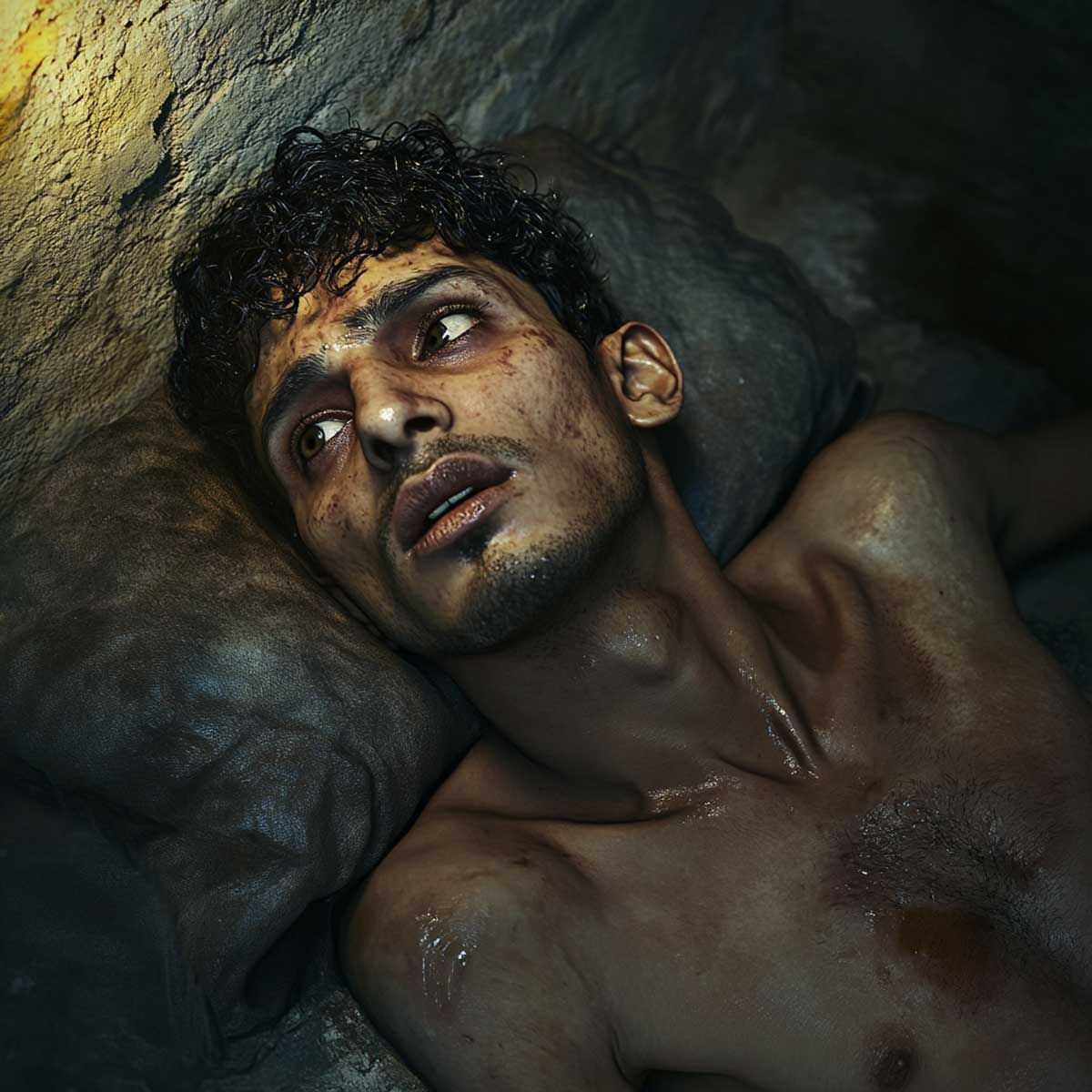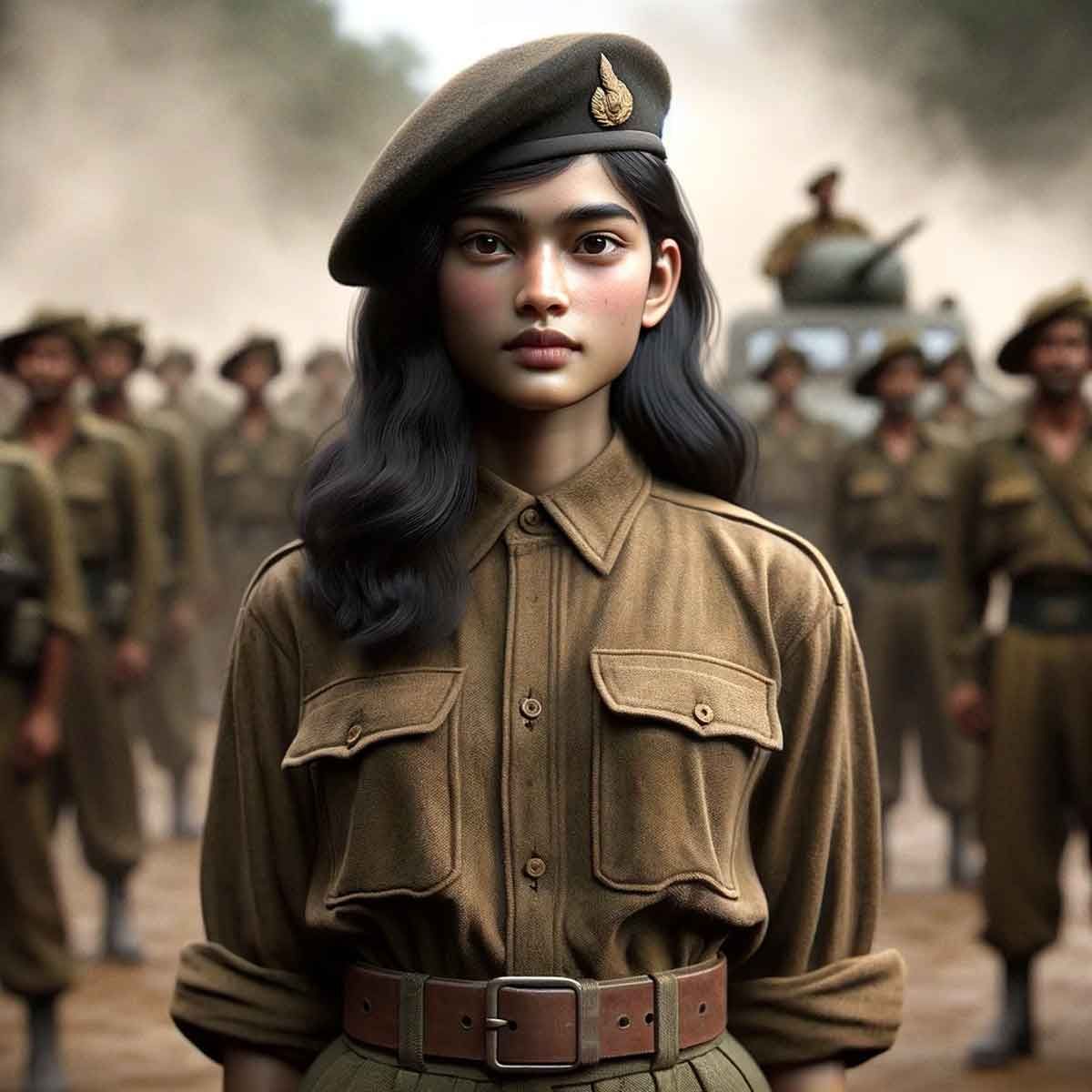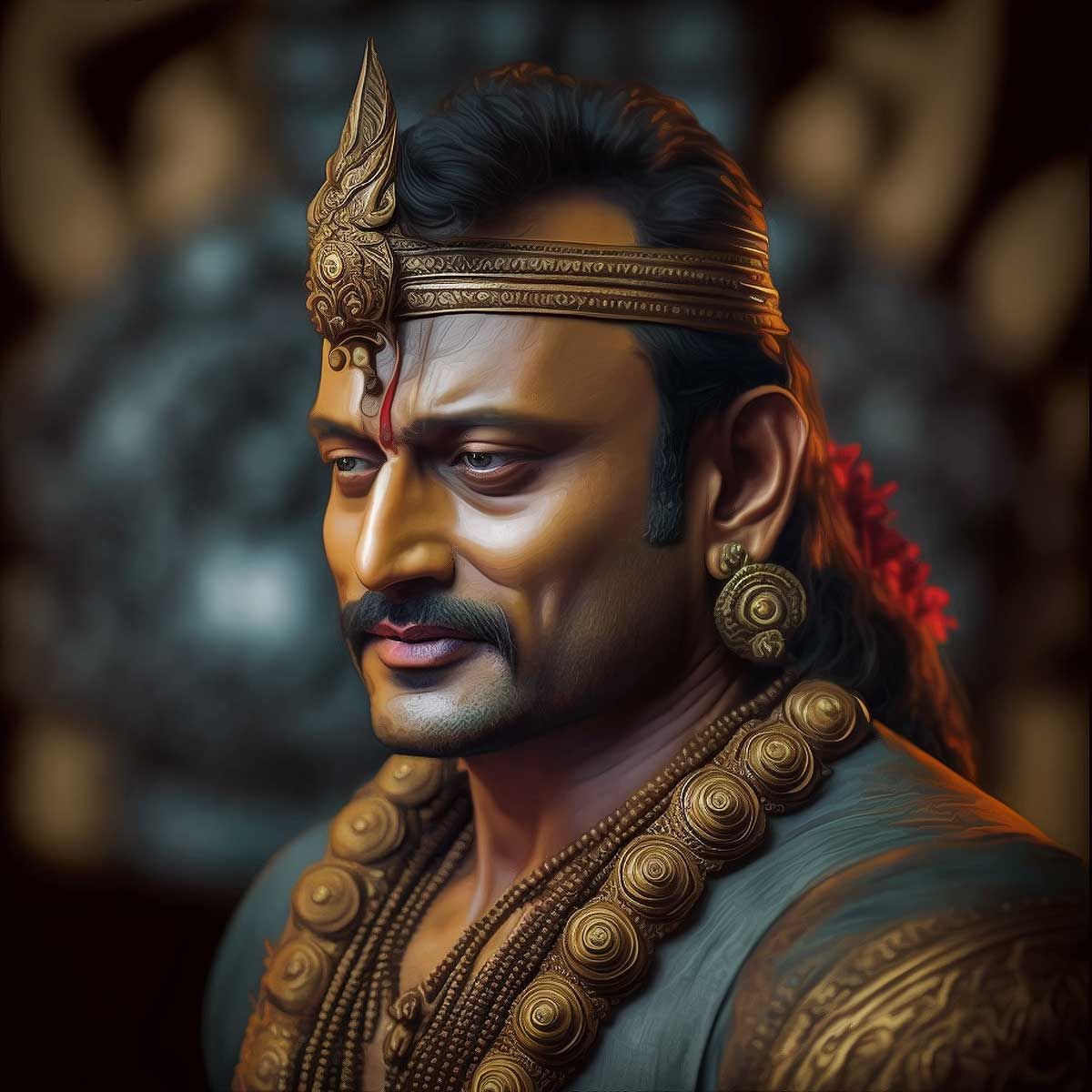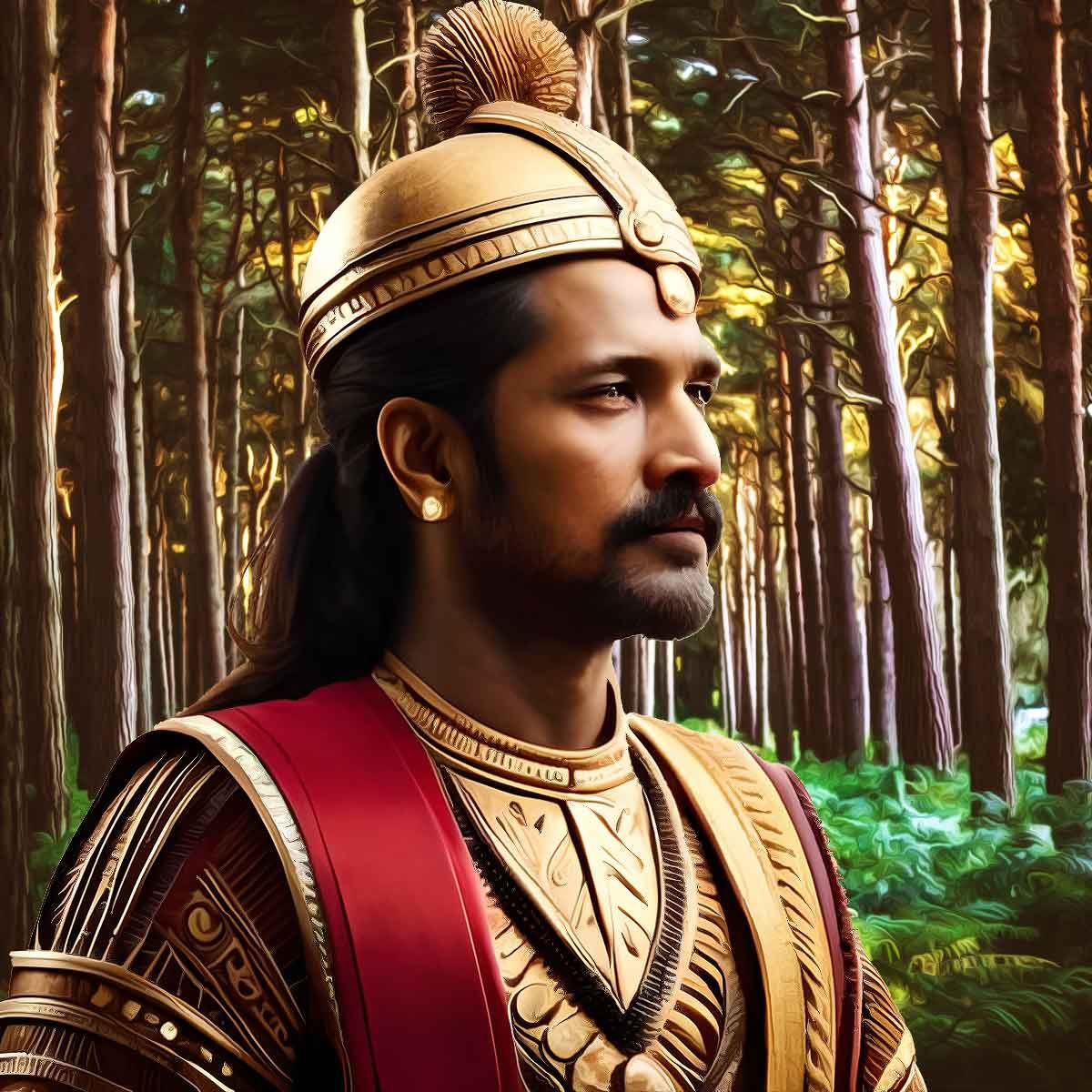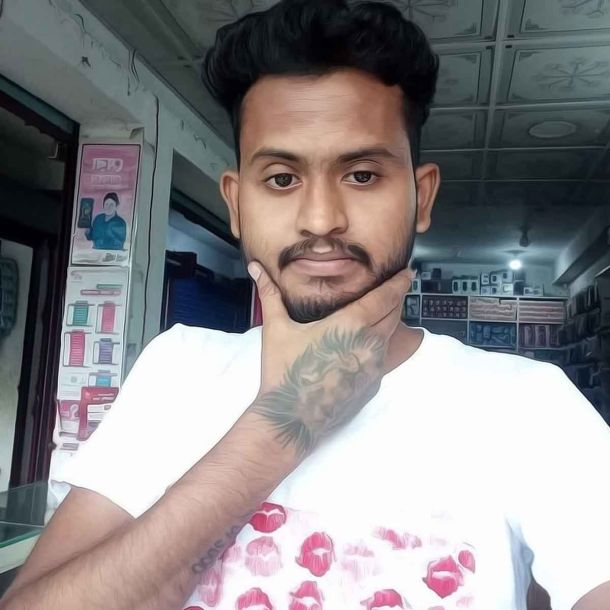More Coverage
Twitter Coverage
Join Satyaagrah Social Media
"True courage is not the brutal force of vulgar heroes, but the firm resolve of virtue and reason": Vinayak Damodar Savarkar who coined the Hindu nationalist ideology of Hindutva is an essence of Bharat and will continue to inspire generations to come

Vinayak Damodar Savarkar, also known as Swatantryaveer Savarkar, Vinayak Savarkar, or simply Veer Savarkar in Marathi, was a freedom fighter and an Indian independence leader and politician who coined the Hindu nationalist ideology of Hindutva. The date of birth of Savarkar is May 28, 1883, and died on February 26, 1966. He was a prominent figure in the Hindu Mahasabha.
On 1 July 1909, on the steps of the Imperial Institute in London, Sir William Curzon Wyllie was shot by Madan Lal Dhingra; Captain Cawas Lalkaka tried to defend Curzon-Wyllie and was also shot. Savarkar was not present but had according to some sources provided Dhingra with the revolver (Srivastava, p. 151). While most of the Indian community condemned Dhingra's action, Savarkar applauded it. Dhingra was sentenced to death. After the assassination, life became more difficult for Savarkar in London and he finally left London for Paris in early January 1910. Meanwhile, a warrant was issued for Savarkar's arrest in England. He returned to London on 13 March 1910 and was immediately sent to Brixton Jail.
It was decided that he should stand trial in India, and on 1 July he embarked on the S.S. Morea. As the ship lay outside Marseilles, Savarkar escaped to French territory. The British tried to recapture him on French soil and the incident became a celebrated case in international law. He eventually arrived in Bombay on 22 July and was immediately taken to jail. He was sentenced to life imprisonment.
He arrived in the Andaman Islands in July 1911 where he stayed until 1921 when he was moved to Ratnagiri, Bombay Presidency, where he was imprisoned until 1924 and interned until 1937. During his imprisonment, he wrote Hindutva: What is a Hindu? After 1937, Savarkar continued his anti-Muslim, anti-British politics and became the ideological alternative to Gandhi's non-violence politics, as President of the right-wing Hindu Mahasabha. He remained a huge political influence until his death in Bombay in 1966.
|
Analyzing the prison years of Savarkar in Andaman Cellular Jail
The Period Veer Savarkar spent at Port Blair strengthened his spirit of revolution and helped him to evolve as a man committed to his cause. Further, the period reflects the growth of Savarkar: the culmination of his ideological journey towards ‘Hindutva’. On 4th July 1911, Savarkar was transported to the infamous Cellular Jail in the Andaman and Nicobar Islands to serve 50 years of Imprisonment. He was not considered by the British government as a political prisoner.
The events that occurred between 1911-1921 in Savarkar’s life, emphasis upon his experience as a political prisoner, being a member of the lowest rung of prison hierarchy in the Cellular jail played a crucial role in his transformation eventually leading up to the Publication of Hindutva: Who is a Hindu?
The Story of My Transportation for Life is the autobiographical work of Savarkar, recounting the entirety of his stay at Andamans. This is a detailed resource if one wishes to reconstruct Savarkar’s life between the periods of 1911-1923. The Story of My Transportation for Life was first published as a series in the magazine Kesari, in 1926, five years since Savarkar left the Cellular Jail. In 1930, it was first published as a book.
Historical Mapping of Cellular Jail
Originally, in 1788, the British attempted to force settlements on the Islands, but the ongoing clashes with the indigenous tribes foiled their design to establish full-scale operations on the island.
The prison complex was constructed between 1896 to 1906, though the British had been using the Andaman islands as a prison since 1857: the first war of Independence. Rebels those who survived execution were exiled for life to the Andamans to suppress their zeal of Nationalism. Two hundred freedom fighters were transported to the islands under the custody of the jailer David Barry and Major James Pattison Walker, a military doctor who had been warden of the prison at Agra. The first war of Independence witnessed a massive influx of prisoners.
The construction of the structure began in 1896 and was completed in 1906. The format of the Cellular jail was based on Jeremy Bentham’s idea of the Panopticon. The building had seven wings, at the center of which a tower served as the intersection and was used by guards to keep watch on the inmates. The wings radiated from the tower in straight lines, much like the spokes of a bicycle wheel.
Bentham initially in a series of letters written to a friend in England, while he was visiting Russia in 1787, mentioned the idea that led to the design. The name, “cellular jail”, is derived from the solitary cells which prevented any prisoner from communicating with any other. Also, the spokes were so designed such that the face of a cell in a spoke saw the back of cells in another spoke. This way, communication between prisoners was impossible. The same in all solitary confinements.
In essence, Historian Satadru Sen observes in Disciplining Punishment: Colonialism and Convict society in the Andaman Islands,”..the Cellular jail in Port Blair was designed to function as a machine, stripping prisoners of their humanity — i.e. their criminal selves – in the process of Punishment and reform.”
Solitary confinement was the desired effect, as the British government ensured that political prisoners and revolutionaries were isolated from one another. Andaman island served as the ideal setting for the government to achieve the same. Authors Cathy Scott-Clark and Adrian Levy in the article titled “Survivors of our hell”; observed: “For the best part of a century, the British Raj sent Indian dissidents and mutineers to a remote island penal colony in an ‘experiment’ that involved torture, medical tests, forced labor and, for many, death.”
|
The Cellular jail at Port Blair due to its geographical location, extreme isolation, and inhuman conditions endured by the prisoners was primarily reserved for those convicts serving the lengthiest and most severe sentences.
The majority of the prisoners in the Cellular Jail were independent activists. Some inmates were Fazl-e-Haq Khairabadi, Yogendra Shukla, Batukeshwar Dutt, Sachindra Nath Sanyal, Bhai Parmanand, Subodh Roy, Trailokyanath Chakravarty, and many others.
Clarke Anderson recorded extensively on the history of confinement in the Indian Ocean, including two articles emphasizing upon the Cellular jail. In “The Politics of Convict Space: Penal Settlements in Southeast Asia,” Anderson stressing upon the Strategical significance of the Cellular jail location, observed: “Transportation was a punishment that removed offenders from society, isolated them in distant settlements overseas and put them to work. At the same time, colonial officials believed that the journey across the ocean (black water, or Kala Pani) which transportation entailed threatened convicts with loss of caste and hence social exclusion.”
|
At the time, when Savarkar was serving his tenure at Cellular jail, his elder brother was an inmate there. Ganesh Savarkar (known as “Baburao”) finds occasional references in Savarkar’s work. In chapter IX, in a particular section, Savarkar recounted in detail, the mental agony, and the physical torment that his brother underwent when forced to work in the Oil- Mill, despite being extremely ill. Savarkar, further added, though conscious of Baburao’s condition, the prison doctor was reluctant to remove him from his labor, as he feared that he may be accused of sympathizing with the inmate. Baburao survived the sentence in Andaman, but couldn’t recover from its horror.
The presence of indigenous tribes in the Andaman Islands who had no relation to the modern world worked as a powerful deterrent. Savarkar mentions these natives in his autobiographical work My Transportation for Life and the description is extremely fitting, and also reflect the government’s tactics to use the narrative of the native tribes to instill fear among prisoners as a precautionary measure and deterrence for escape attempts.
When Savarkar along with other fellow prisoners arrived at Cellular jail for the first time, they met the infamous police Superintendent David Barrie. Savarkar quotes the warnings issued by Barrie:
I would give you one more tip, and it is this “You will be involving yourself in a terrible mess if ever you try to run away from this place. The prison is surrounded on all sides by vast, dense, impenetrable jungles; the cruelest of Aborigines make their abode in them; they are cannibals. If they catch you, they kill you, and make a meal of tender, young bodies like yours; as easily as we may eat cucumbers!”
|
Inhumane Treatment in the Cellular Jail
At the beginning of Chapter IX of My Transportation, Savarkar mentioned that the life of the political prisoners in the Cellular jail, before him had been difficult, but not unbearable. However, the scenario changed, when a group of nationalists — convicted in the Bengal Bomb case was transported to the Cellular Jail — A High ranking official from Calcutta (who remains anonymous) visited the jail and was disgruntled by the way the “Bomb-Makers” were being treated. Savarkar recounts, that the same man signified that political prisoners “…… are the worst prisoners in the world, and they must be treated in this prison that will break their spirit and completely demoralize them.”
Sen corroborates the statement in his work: “The nationalist convicts were, for the most part, seen by the jailors as beyond rehabilitation, and as impervious to the mechanism that was typically used in the Andamans to generate and sustain loyalty. As such, with these prisoners, the goals of transportation were isolation and containment, rather than reform and reclamation.”
Political prisoners were allotted to turn the oil mill (as a part of the daily labor). This singular work, as finds a place in almost every account of the survivors of the Cellular jail, was cruel and inhuman, involved being “yoked like animals to the handle that turned the wheel… twenty turns of the wheel were enough to drain away the strength of the strongest cooly and the worst, brawny badmash. No dacoit past twenty was put on that work. But the political prisoner was fit to do it at any age.”
The severity of working in the Oil- mill is validated by numerous reports, including the works of Barindra Ghosh and many former Prisoners interviewed by the Guardian for an article. The mental agony and physical torment underwent by the political prisoners are hard to describe and many of them worked so hard, that they were physically unable to continue the labor allotted. Sen observed: “…it is clear that the labor to which political prisoners were subjected in the Andamans was intended to function as a form of torture…There was, in such labor, no question of ‘reform,’ and no possibility of rehabilitation. Political prisoners were not expected to actually meet their quota of Oil; those who did were not rewarded….”
In 2001, Authors Cathy Scott-Clark and Adrian Levy wrote an article in the Guardian “Survivors of our hell”; they both uncovered classified official records from the Cellular jail.
One of the infamous stories they unearthed was of prisoner Mahavir Singh, who interned in the Cellular jail during the 1930s. When he began a hunger strike, as a measure to break the strike, he was forcefully fed through a rubber catheter into the nose. The practice of forcefully feeding, through a rubber catheter was commonplace, Singh paid the ultimate price when the catheter pierced his lung “drowning him in milk”.
Scott-Clark and Levy further write, shockingly “within four years of [of founding the penal colony in 1858] 3,500 out of 8,000 transportees had been killed or had died of fever….” The staggering figure is corroborated by Sen who notes in Disciplining Punishment that near the middle of the 19th Century, the Government acknowledged a mortality rate approaching 30% at Cellular jails.
The prisoners were treated in a dehumanizing manner, and they remained subjects of experiments for prison officials and doctors to conduct inhumane experiments and satisfy their sadistic urges. Moreover, virtually, there was no recourse for the convicts; though prisoners were allowed to submit petitions to the government for early release or for improving living conditions, such pleas never saw the rays of light.
Hunger Strikes:- Savarkar in My Transportation for Life, describes in detail, the prisoners dejected with the conditions in the Cellular jail. Moreover, watching their colleague suffer and be punished severely, orchestrated work strikes and it seems that Savarkar was often the leader. According to Savarkar, Mr. Barrie declared that “Savarkar was the father of unrest in the Andamans…” Savarkar’s involvement in such work strikes reflects his undying spirit of nationalism and commitment to his causes, even under the most trying circumstances.
Hunger strikes by the inmates in May 1933 caught the attention of the jail authorities. 33 prisoners protested their treatment and sat on hunger strikes. Among them were Mahavir Singh, an associate of Bhagat Singh (Lahore conspiracy case), Mohan Kishore Namadas (convicted in the Arms Act Case), and Mohit Moitra (also convicted in the Arms Act Case). These three died due to force-feeding.
Cellular Jail Library: Savarkar, in chapter XII reveal his daily life in the prison and the importance of books given to the prisoners. Though, the collection was limited and extremely restricted, Savarkar asserts the importance of reading for augmenting intellectual ability and strengthening the revolutionary philosophy, to further one’s political agenda. Savarkar’s years of relentless effort and struggle with the prison officials, he and some of his companions were successful to establish a prison library which included works of Swami Vivekananda, Tolstoy (My Religion), Mazzini, Bluntschli, Herbert Spencer, and works in theosophy by Annie Besant — among many others. All this literature helped Savarkar to give concrete shape to his Hindutva philosophy, Savarkar further recounts that owing to his excellent memory, he was able to produce written outlines of many books which he had read previously. The outlines either scribbled on scraps of paper or on the walls of the prison, educated other prisoners, and also motivated Savarkar to continue his work. On one occasion, he describes “a full outline of Spencer’s ‘First Principles’ onto one wall, and “all the definitions of political economy as I had learned from Mills’ work on the subject” on another. This process of scribbling on the walls of the prison, later, took the shape of early drafts of Hindutva: Who is a Hindu?
|
Savarkar’s Mercy Petitions:- Savarkar during his tenure as a political prisoner submitted a number of Mercy Petitions for certain concessions in connection with his sentences.
On 30th August, 1911, after a month at the Cellular jail, Savarkar submitted his first petitions. The petition was rejected on 3rd September 1911. This was followed by another petition on 14th November 1913, which was rejected too. In 1917, another mercy petition was submitted by Savarkar, for general amnesty of all political prisoners. The same was rejected again.
On December 1919, there was a royal proclamation by King George V. On 30th <March, in lieu of the Royal proclamation, Savarkar submitted his fourth mercy petition to the British government. In the petition, Savarkar noted “So far from believing in the militant school of the Bukanin type, I do not contribute even to the peaceful and philosophical anarchism of a Kuropatkin [sic] or a Tolstoy. And as to my revolutionary tendencies in the past:- it is not only now for the object of sharing the clemency but years before this have I informed of and written to the Government in my petitions (1918, 1914) about my firm intention to abide by the constitution and stand by it as soon as a beginning was made to frame it by Mr. Montagu. Since that the Reforms and then the Proclamation have only confirmed me in my views and recently I have publicly avowed my faith in and readiness to stand by the side of orderly and constitutional development.”
|
The petition was rejected, though the government thought of releasing Ganesh Savarkar.
References:
- myindiamyglory.com
- Charles Higham “Andaman Islands,” in Oxford Encyclopedia of the Modern World (Oxford University Press, 2008).
- Jeremy Bentham. “Panopticon: or, the Inspection-House.
- Satadru Sen, Disciplining Punishment: Colonialism and Convict Society in the Andaman Islands (Oxford; New York; New Delhi: Oxford University Press, 2000); 10.
- Clare Anderson, “The Politics of Convict Space: Penal Settlements in Southeast Asia.” in Isolation: Places and Practices of Exclusion, Ed. Bashford and Strange (2003).
- Patrick Olivelle, Dharmasutras: The Law codes of Aastamba Gautama, Baudhayana,and Vasistha (Oxford; New York: Oxford University Press, 1999), 168.
- V.D. Savarkar, “My Transportation for Life,” in Selected Works of Veer Savarkar ( Delhi: Abhishek Publications, 2007), 88.
- Cathy Scott-Clark and Adrian Levy, “Survivors of Our Hell,” The Guardian 2001.
- Barindra Kumar Ghosh, The tale of My Exile (Pondicherry: Arya Office, 1922).
- Ashish Nandy, “ A Disowned Father of the Nation of India: Vinayak Damodar Savarkar and the Demonic and the Seductive in Indian Nationalism,” Inter-Asia Cultural Studies 15, no.1: 98.
 Support Us
Support Us
Satyagraha was born from the heart of our land, with an undying aim to unveil the true essence of Bharat. It seeks to illuminate the hidden tales of our valiant freedom fighters and the rich chronicles that haven't yet sung their complete melody in the mainstream.
While platforms like NDTV and 'The Wire' effortlessly garner funds under the banner of safeguarding democracy, we at Satyagraha walk a different path. Our strength and resonance come from you. In this journey to weave a stronger Bharat, every little contribution amplifies our voice. Let's come together, contribute as you can, and champion the true spirit of our nation.
 |  |  |
| ICICI Bank of Satyaagrah | Razorpay Bank of Satyaagrah | PayPal Bank of Satyaagrah - For International Payments |
If all above doesn't work, then try the LINK below:
Please share the article on other platforms
DISCLAIMER: The author is solely responsible for the views expressed in this article. The author carries the responsibility for citing and/or licensing of images utilized within the text. The website also frequently uses non-commercial images for representational purposes only in line with the article. We are not responsible for the authenticity of such images. If some images have a copyright issue, we request the person/entity to contact us at This email address is being protected from spambots. You need JavaScript enabled to view it. and we will take the necessary actions to resolve the issue.
Related Articles
- "Danger gleams like sunshine to a brave man's eyes": Savarkar, a writer, trendsetter – man of many firsts, such as being the one to write 1857 Freedom Struggle that irked British into banning it even before its publication, whom Indira Gandhi worshipped
- Vinayak Damodar Savarkar – A Misunderstood Legacy
- "Arriving at one goal is the starting point to another": CM Bommai and Speaker VH Kageri unveils the portrait of revolutionary freedom fighter Veer Savarkar in the Assembly hall of the Suvarna Vidhana Soudha in Belagavi, Congress stages protest
- "The nation which forgets its defenders will be itself forgotten": Asilatha Godse, also known as Himani Savarkar was the daughter of Gopal Godse and niece of Nathuram Godse who preserved every book of Savarkar when the Congress was destroying his work
- Hero of Pawankhind: Veer Maratha Bajiprabhu Deshpande, who led 300 Soldiers against 12000 Adilshahi Army defending Shivaji
- Rani Chennamma of Keladi who fought bravely against Mughals and gave shelter to Shivaji’s son Rajaram, killed more than half of the forces of Aurangzeb's son Azamath Ara
- "When all other rights are taken away, the right of rebellion is made perfect": Revolutionary Sachindra Nath Sanyal, whom Gandhians sought to crush was the one to form Army of the Republic of Hindustan (1924), an Indian army that overthrew the British Raj
- A revolutionist freedom fighter who the British Raj framed for murder
- "The tyrant dies and his rule is over, the martyr dies and his rule begins": Baji Rout, a boat boy - youngest martyr of India's freedom struggle who was manhandled, threatened & skull fractured but refused to ferry British police across the Brahmani River
- "You cannot expect to get the effect when you neglect to create the cause": 73 years after his death it was Modi who finally brought back ashes of Shyamji Krishna Varma and his wife from Geneva as their last wish to be returned to an independent India








